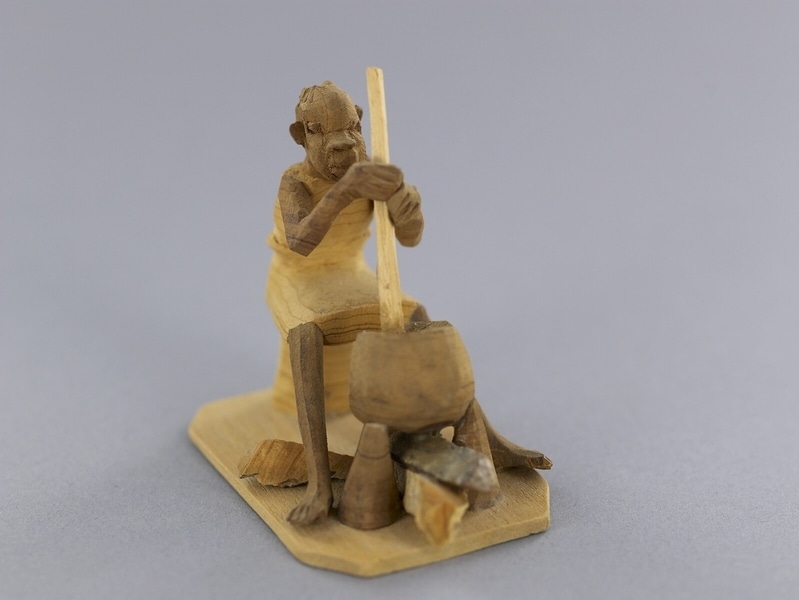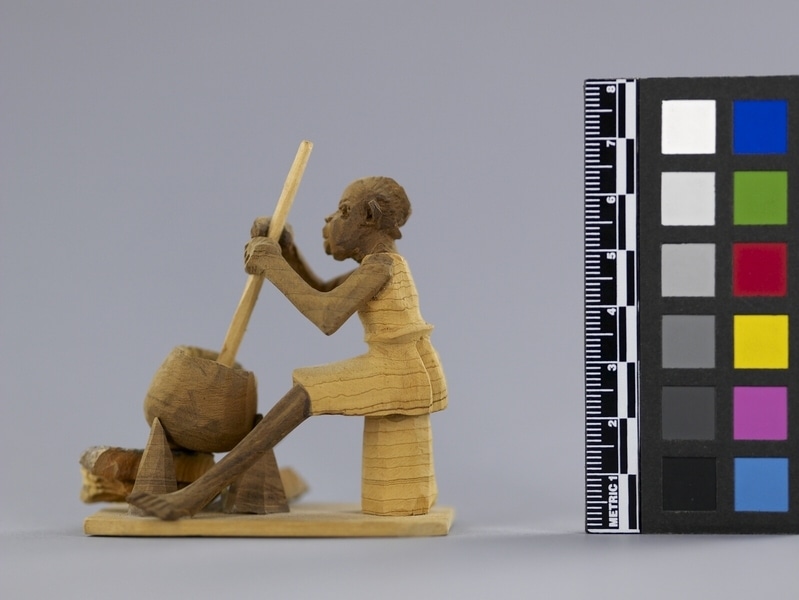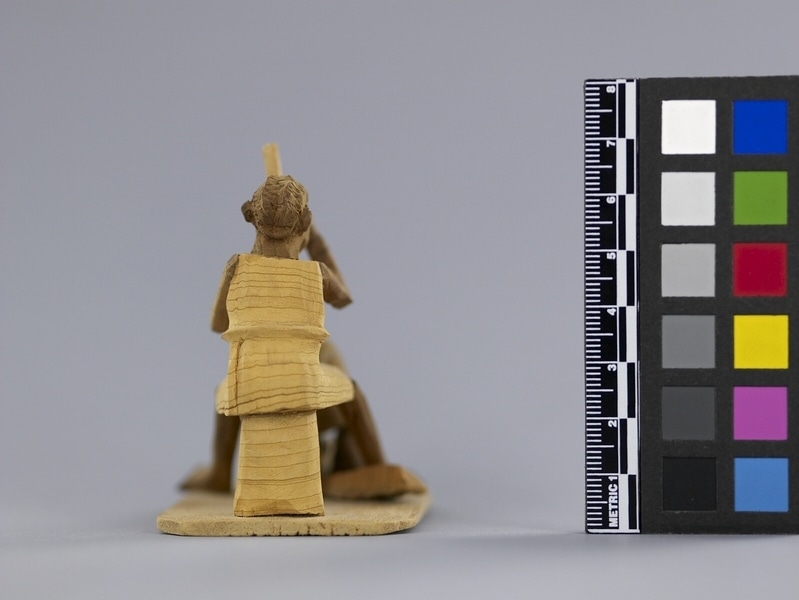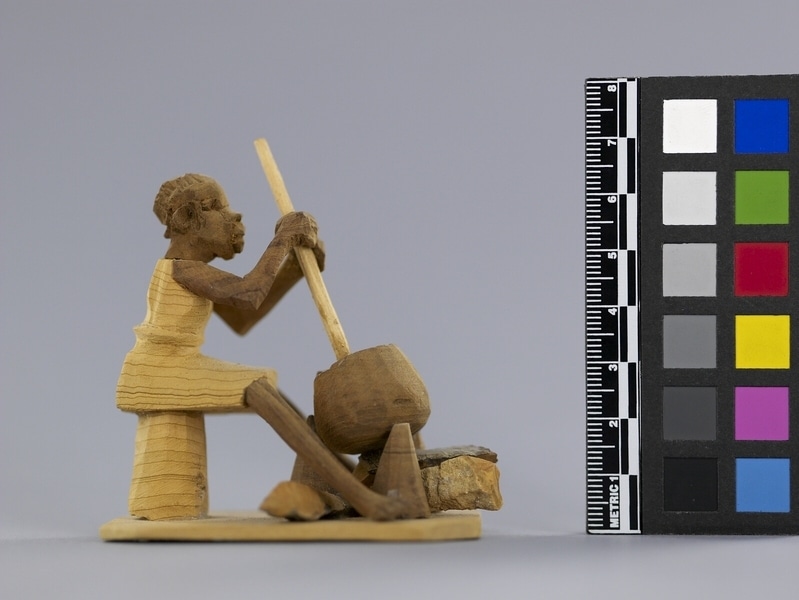Thorn Carving Item Number: K2.101 from the MOA: University of British Columbia




Description
Sitting figure representing a person stirring a pot (réwâh or ézé) over a hearth (mizâh or adokpô). Figure is sitting on a cylindrical object tapering upward. The knees are bent so that the legs are angled frontward and outward with the pot and the fire in between the feet. The arms are extended outward as both hands hold a spatula (n’nawou or akoumé-dati) to stir the pot. Clothes are of a lighter wood colour than the body. On a wood base.
History Of Use
Thorn carvings are miniatures depicting a variety of scenes from Nigerian life. The carvings first began to be made circa 1930. The thorns vary in size; they can be as large as 12.7 cm long and 9.6 cm wide. The thorn wood is comparatively soft and easy to carve; they are traditionally carved by men. The scene depicted in this carving represents a woman preparing a traditional dough known as akoumé (or banku or tô). The hearth or furnace is usually built from three granite stones in order to support the pot; the triangular shape symbolizes the unity and stability of family. Typically, the pot would be made of terracotta and would be handled by someone highly skilled, in order to avoid breaking it; today they are also made out of aluminum.
Cultural Context
craft; tourist art
Specific Techniques
The light yellow-brown thorn and the dark brown thorn come from the ata tree; the light red-brown thorn comes from egun trees. The parts are glued together with viscous paste made that was made from rice cooked with water.
Narrative
Collected by Dugal MacGregor while he was a teacher at the University of Accra, 1970.
Item History
- Made in Viame, Ghana
- Owned by Dugal Macgregor and Sue Macgregor before April 1970
- Received from Dugal Macgregor (Donor) and Sue Macgregor (Donor) during April 1970
What
Who
- Culture
- Yoruba ?
- Previous Owner
- Dugal Macgregor and Sue Macgregor
- Received from
- Dugal Macgregor (Donor) and Sue Macgregor (Donor)
Where
- Holding Institution
- MOA: University of British Columbia
- Made in
- Viame, Ghana
When
- Ownership Date
- before April 1970
- Acquisition Date
- during April 1970
Other
- Item Classes
- carvings & sculpture
- Condition
- good
- Accession Number
- 0166/0005